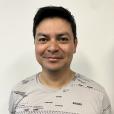Be part of the ACS COVID-19 hackathon
ANSTO is proud to support calls for daring and innovative ideas to fight COVID-19 as part of the ACS online Flatten The Curve hackathon.

Showing 361 - 380 of 504 results
ANSTO is proud to support calls for daring and innovative ideas to fight COVID-19 as part of the ACS online Flatten The Curve hackathon.
International research led by Monash University and the Peter Doherty Institute for Infection and Immunity has achieved a proof of concept for a new, fast, portable saliva screening test that uses an infrared light technology to confirm infection with SARS-CoV-2.
ANSTO Synroc technology provides a safe, secure matrix for the immobilisation and final disposal of radioactive waste.

ANSTO's unique capabilities are being used to develop a quick analytical tool to determine the geographic origin of seafood and authenticates quality.
ANSTO has installed a radon detector for Curtin University in Burrup WA as part of the Murujuga Rock Art Monitoring Program
ANSTO scientist, Dr Klaus Wilcken of the Centre for Accelerator Science, used cosmogenic nuclide dating to determine the ages of layered sand and gravel samples, in which seven footprints of the flightless bird, the moa, were found on the South Island in New Zealand in 2019.
PNG Fisheries expresses great satisfaction with the progress of aquaculture initiative.
The complex engineering of scientific instruments is explored in this 'behind the scenes' look at the installation of frontends for two new beamlines at the Australian Synchrotron.

The International Synchrotron Access Program (ISAP) is administered by the Australian Synchrotron and is designed to assist Australian-based synchrotron users to access overseas synchrotron related facilities.

Using geoarchaeology to reconstruct the history of an ancient Khmer city.
New screening method developed to confirm if deuteration improves metabolic stability.
Dharawal educator Fran Bodkin has spent a good part of her eighty plus years, studying or sharing information about the therapeutic and nutritional properties of traditional indigenous plants and wildlife.